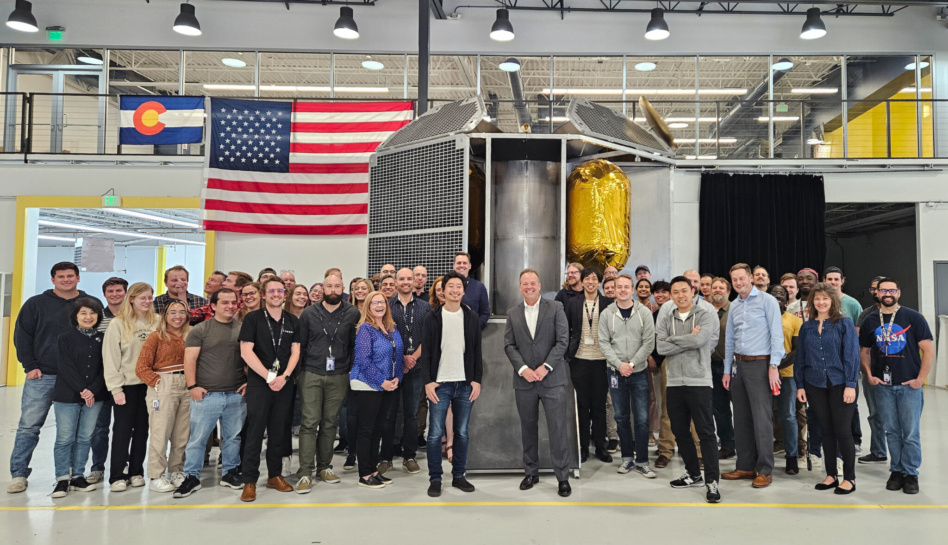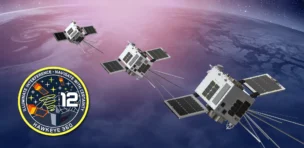The countdown has started on ispace’s NASA-backed date with the Moon in June 2025, and the US team has locked itself in a room this week to game out the details.
The company began a four-day exercise on Monday akin to a military-style wargame that will help the company zero in on when the spacecraft will be ready to launch on its mission for NASA’s Commercial Lunar Payload Services program and how changing different variables would impact the timeline, Ronald Garan, a former astronaut who became CEO of ispace US last month, told Payload.
“We locked eight people in a room for eight hours a day, including third party contractors,” Garan said. “We’re looking at critical path analysis and the difference between the target date and the scheduled date…We’re going through exercises to see how we can reduce or eliminate the gap and iterate on different critical path analysis to see what’s the long pole in the tent [and]…look for ways to pull that in.”
CLPS 101: NASA is working with 14 companies to land uncrewed missions carrying science and tech payloads on the Moon’s surface under its Commercial Lunar Payload Services(CLPS) program. Draper’s team for the program, which includes ispace and its SERIES-2 lander, is expected to land in 2025 at Schrödinger Basin, a large crater on the Moon’s South Pole. It will also deliver two comms satellites into lunar orbit.
A look back: ispace Inc, the Japanese parent company of ispace US, initially formed to compete for Google’s Lunar XPRIZE, which challenged companies to soft-land on the moon, travel 500 meters, and transmit data back to Earth.
Google’s challenge ended without a winner, but ispace continued its quest to reach the moon commercially. The company attempted to soft-land the HAKUTO-R craft in April, and though it achieved many milestones and transmitted data back to Earth, it ultimately crashed into the Moon. The team is expecting to try again next year.
In his first interview as CEO of the company’s American office, Garan also talked about how lessons learned during the parent company’s April lunar landing attempt will be incorporated into the NASA mission, plans for growth at the Denver HQ, and the future of the commercial lunar ecosystem.
Questions and answers have been edited for length and clarity.
What is at the top of your to-do list in your new job?
My number one task is making sure we have the team and the structure to make sure we can do [the N3 mission for NASA’s CLPS program, in partnership with Draper] successfully.
We have exponential growth in the company, and we need to have that to be able to fulfill the mission. All the challenges going from a small startup to a team that has the resources and personnel to do something monumental is what we’re doing right now. It’s not only a monumental technical achievement, but a monumental organizational challenge as well.
How do you expect your US staff to grow to support the CLPS mission?
We onboarded three [people] today. We hope to get to around 100 by the end of the year, and we’re up to 78 as of today. When I signed on [in June] we were at just over 50. So we’re growing fast to meet this challenge.
What did ispace learn from its lunar landing attempt in April that will help inform US government programs?
One of the things we look at very closely is what are all the root cause problems that created the failure to reach the last two objectives. You’re always going to find technical reasons for it to happen, but almost all the technical reasons, if you dig a little deeper, are programmatic reasons. Did we have the proper level of collaboration and communication? What was the decision making process like? It’s really a focus to learn from that mission.
What will ispace’s US business look like five years from now?
The reason I took this job is that I am, and I have been now for decades, a very strong proponent of establishing a transportation infrastructure between the Earth and the Moon, and an infrastructure on the lunar surface.
NASA is stimulating this market. For the next five to 10 years, the driver will be NASA and other government agencies. The hope and expectation is that the lunar commercial market will follow, and both ispace US and ispace Inc. will be uniquely positioned to be a major player in lunar infrastructure development.
How autonomous is the US team?
You could think of it now as a branch of the team, but for ispace US to be successful—and it needs to be successful for ispace Inc’s business plan—it has to become more independent. For CLPS, we are part of team Draper, but we want to be a prime US government contractor. To do that, we have to operate outside of FOCI (foreign government control or influence).
We’re in a transition period where the US entity will be given more and more autonomy so we can be a prime. That’s a long-term goal that requires a significant transition period to be sure we’re doing that smartly and efficiently.
How did your time in space color how you view this job?
When you go to space, you get to step outside of the only world you’ve ever known. It changes your perspective in a profoundly positive way. I left space with a call to action.
That type of perspective changes everything. What motivates me is creating a unique impact, meaning an impact that wouldn’t happen if I didn’t do it. I’ve been very picky on what I’ve put effort and focus into. Certainly ispace meets that objective. I really welcome and honor this opportunity to be part of establishing lunar infrastructure.




